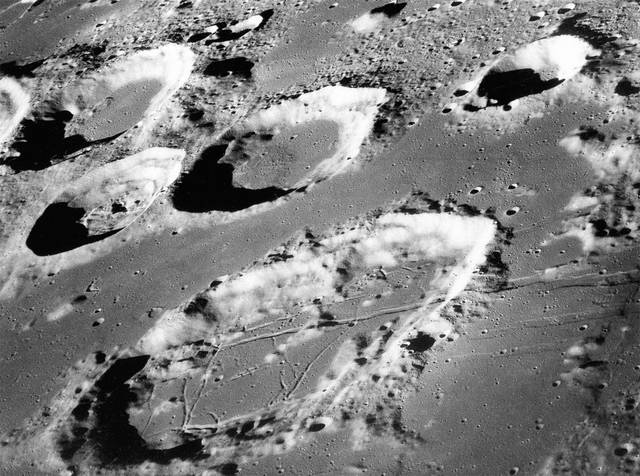Destination Moon exhibit shares story that captivated the world
Share this post:
The Bridgeville Area Historical Society’s April program meeting featured a presentation by Heinz History Center curator Emily Ruby on their recent exhibit, “Destination Moon: the Apollo 11 Mission.” The center was justly proud of being one of four national museums honored by hosting this epic exhibition created by the Smithsonian Institution Traveling Exhibition Service.
She began by reviewing the history of our space program. Toward the end of World War II it became obvious that Germany’s military rocket program was well ahead of anything the Allies had developed. When the War ended the German rocket scientists were conveniently exempted from war crimes indictments and quickly found comfortable new careers in rocket programs in Russia and the United States.
Their work was largely ignored until Oct. 4, 1967, when the Russians launched Sputnik I, the first successful artificial satellite, and moved into the forefront of the space race. Sputnik could be observed passing over Pittsburgh every 96 minutes and broadcasting short wave radio signals.
The success of Sputnik sent a shock wave through our society. John F. Kennedy exploited the “missile gap” on his way to winning the Presidential election in 1959. On April 21, 1961, the Soviets logged another first when Yuri Gagarin became the first human in space.
Kennedy’s response was to tell Congress on May 24, 1961, that the United States “should commit itself to achieving the goal, before this decade is out, of landing a man on the Moon and returning him safely to the Earth.” The Mercury Project, initiated during the Eisenhower administration, was already well under way, culminating in its sixth successful manned mission in May, 1963.
Ten successful Gemini Project missions, followed by five successful Apollo missions, produced the memorable night, July 20, 1969, when Neil Armstrong jumped out of Apollo 11 and stepped onto the surface of the moon. We had leaped ahead in the Space Race and had honored Kennedy’s commitment.
Ruby then described the process the History Center followed in designing this exhibit, beginning with an inventory of the artifacts that would be included, and ending with the decision to focus on contributions Pittsburgh firms made to the success of the mission. We Pittsburghers are parochial, and one way to generate an interest in an exhibit is to emphasize local ties.
Ruby mentioned a number of local firms who contributed to the mission – North American Rockwell, Westinghouse, Union Switch and Signal, the American Bridge Company, ALCOA, Blaw Knox, and Mine Safety Appliances.
Her cutest story dealt with a community in Armstrong Country, the only one in the world named Apollo. On the day Neil Armstrong walked on the moon, they sent two firemen dressed as astronauts to Moon Township to recover “moon dirt.” She proudly showed a photograph of a small pot of this artifact which was displayed in the exhibit.
My memories of the Space Race are still distinct. I remember trying to spot Sputnik as it passed overhead. I remember getting our 3-year-old daughter, Elizabeth, out of bed to watch the moon landing, an experience she fondly recalls.
The next Historical Society program is scheduled for May 28 when Todd DePastino will discuss the Whiskey Rebellion. It will be held at the Chartiers Room, Bridgeville Volunteer Fire Department, at 7:30 pm.


